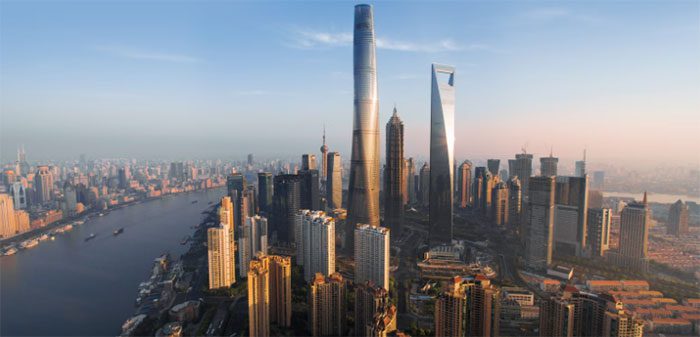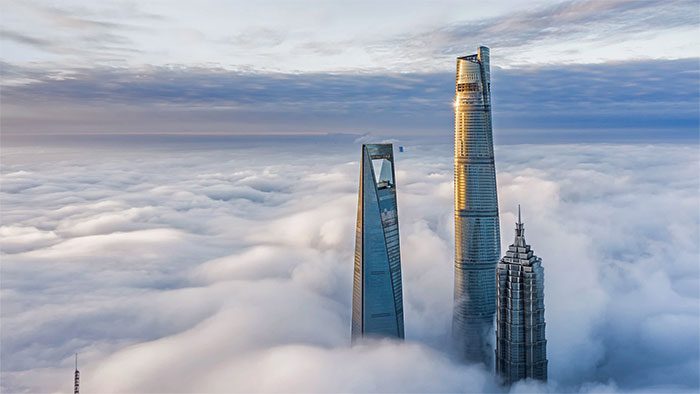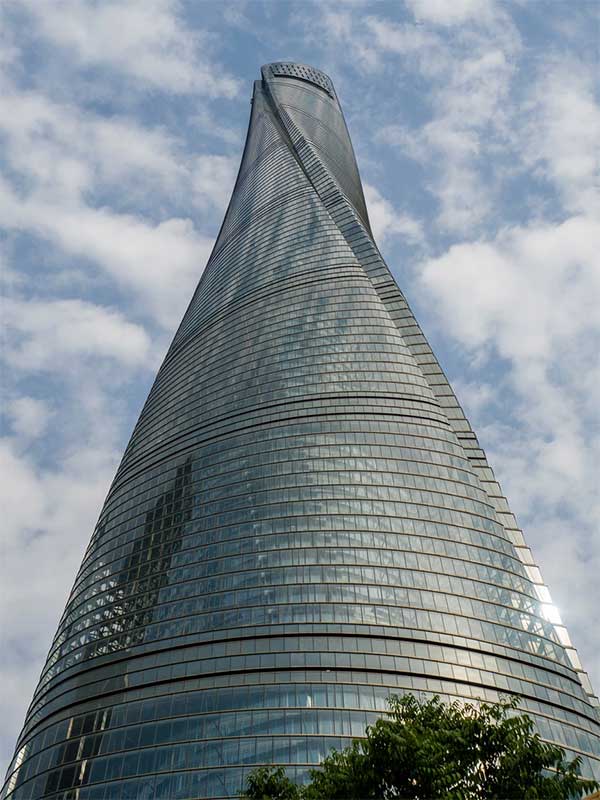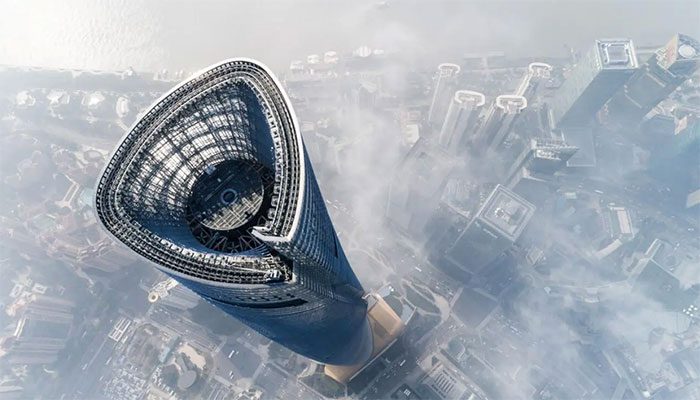When listing countries famous for their unique architectural landmarks that leave a profound impression on onlookers, China undoubtedly stands out. In this country, many buildings exhibit such creative designs that they seem almost unbelievable. The Shanghai Tower is one such building.
The Tallest Building in China

The Shanghai Tower stands 128 stories tall, reaching a height of 632 meters. (Photo: The Guardian)
The Shanghai Tower, also known as the Shanghai Tower, began construction in November 2008 and was completed in the summer of 2015. Located in Lujiazui, Pudong, Shanghai, the tower is 128 stories tall, corresponding to a height of 632 meters. The Shanghai Tower is recognized as the second tallest building in the world, only surpassed by the Burj Khalifa, and it is simultaneously the tallest building in China. After its completion in 2015, the Shanghai Tower, with its height of 632 meters, easily surpassed the tallest building in the United States at that time, which stood at 541 meters.
The Shanghai Tower was designed by the architectural firm Kohn Pedersen Fox Associates, based in New York with multiple offices worldwide. The building has a floor area of 377,000 m2 and accommodates approximately 12,000 office workers across its 70 floors. The lower levels of the building contain business spaces and conference centers, while a hotel occupies the upper floors.

With a height of 632 meters, this building easily surpassed the tallest building in the United States. (Photo: The Guardian)
Given that Shanghai is a sandy plain area often affected by weather phenomena such as typhoons and earthquakes, ensuring that this towering skyscraper remains stable posed a significant challenge for the design and construction teams.
Architect Tim Johnson, who leads the selection committee of the Council on Tall Buildings and Urban Habitat, described the tower’s design as one that features a steel framework capable of withstanding wind and seismic activity, which makes the building lighter and reduces the amount of steel required for construction, enhancing its stability.

The estimated weight of this building is around 850,000 tons. (Photo: The Guardian)
To complete the foundation of the building, over 2,000 workers had to drive hundreds of deep foundation piles into the ground. More than 61,000 m3 of concrete was continuously mixed and poured over 60 hours to create the foundation for the Shanghai Tower. Additionally, to help stabilize the structure in high winds, the building features a specially designed spiral shape. The estimated weight of the tower is about 850,000 tons.
The Shanghai Tower consists of nine stacked cylindrical sections, all covered with two layers of highly reflective glass to reduce heat absorption. The building’s railing system is also designed in a spiral form, maximizing heat absorption for climate control and heating purposes.
A Peculiar Design

While the Shanghai Tower holds many records, many people perceive its design as overly abstract. (Photo: The Guardian)
Although the Shanghai Tower boasts many records, in the eyes of many, its design is considered overly abstract. This perception arises because the building is designed in a spiral shape, especially with its top penetrating the clouds, giving the impression that it is otherworldly.
This design of the Shanghai Tower has been described as “unique.” Unlike the conventional square facades of typical buildings, the Shanghai Tower twists as it rises, leading viewers to mistakenly believe it is leaning or distorted.

Architects have explained that the design of the Shanghai Tower aims to better adapt to Shanghai’s climate and mitigate damage from strong winds. (Photo: The Guardian)
Architects have clarified that since Shanghai is a coastal city in eastern China, it is often affected by strong storms during the summer. This building was designed to better adapt to Shanghai’s climate and minimize damage caused by strong winds. Thus, when strong winds pass, the building’s curved surface will have a certain moderating effect, even able to withstand a force equivalent to a level 12 typhoon. The conical shape gives the impression that the building is “melting” into the sky.


















































